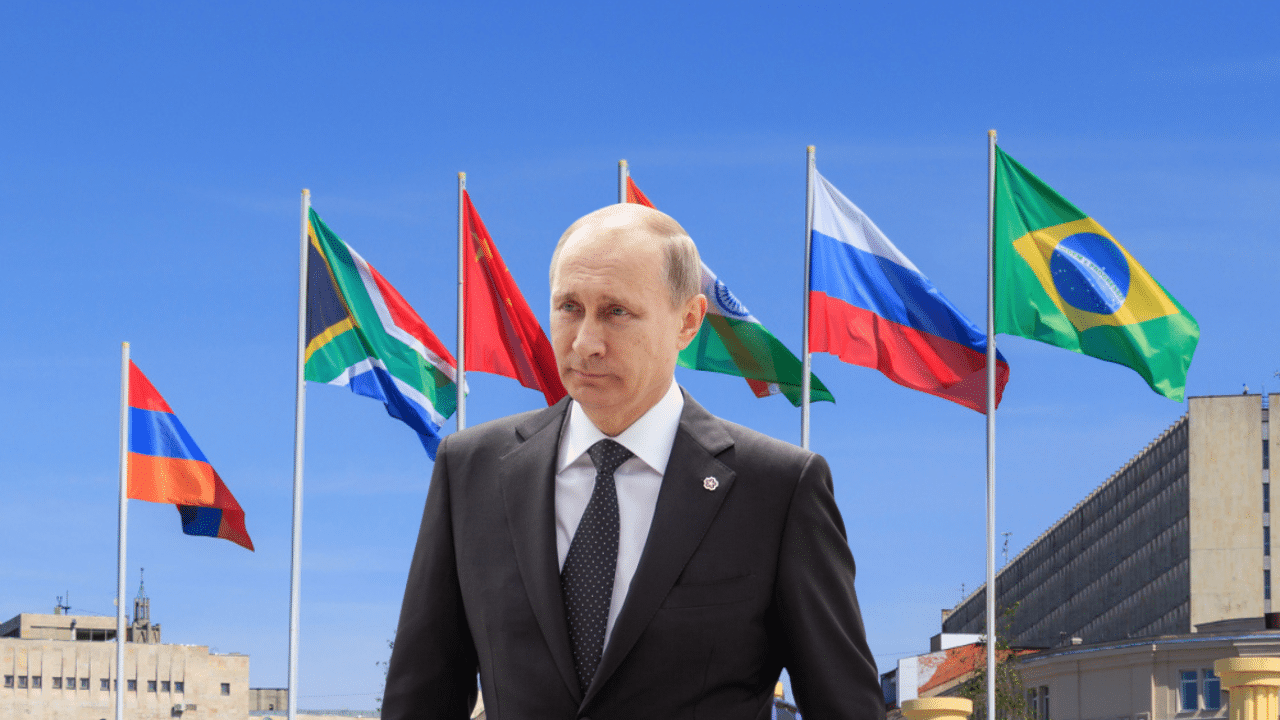At the Russian Energy Week forum in Moscow, President Vladimir Putin announced that the BRICS nations are actively working on creating their own payment and settlement system.
This initiative is aimed at reducing dependence on Western financial structures like SWIFT, from which Russia has been disconnected due to sanctions imposed in response to the Ukraine conflict.
Russia has already been transitioning to the use of national currencies in trade with BRICS nations—Brazil, Russia, India, China, South Africa, along with new members Iran, Egypt, Ethiopia, and the UAE.
Putin emphasized that this payment system will strengthen economic cooperation among BRICS members, creating a platform where member states can efficiently conduct foreign trade without relying on the US dollar or the euro.
The Russian ruble’s share in the country’s foreign trade has grown significantly in recent years, accounting for 39.4% of all trade in 2023. This figure marks a threefold increase from 2021, with further expansion expected as Russia continues to deepen ties with BRICS countries.
Rather than establishing a common currency right away, BRICS is focusing on developing a blockchain-based platform called the BRICS Bridge Multisided Payment Platform.
This innovative system will connect member nations’ financial networks, enabling settlements via central bank digital currencies (CBDCs).
The BRICS Bridge is designed to be an alternative to SWIFT, which is currently dominated by the US and European Union, providing an independent cross-border payment solution that is secure and cost-effective.
The Kremlin envisions this system as a politically neutral and technologically advanced solution that meets the needs of both businesses and individuals in BRICS countries. It will also provide a crucial buffer for countries that face the threat of economic sanctions from the West.
While the BRICS Bridge is the immediate focus, discussions are ongoing about the creation of a BRICS-wide currency, tentatively called The Unit. This common currency would be pegged 40% to gold and 60% to a basket of BRICS members’ national currencies.
The goal is to create a stable and universal instrument for trade, which can be converted into any national currency, helping to further decouple from the US dollar.
However, the rollout of this currency remains a long-term project, with estimates suggesting it could take until 2030 for full implementation.
In the meantime, BRICS members will continue to reduce their holdings of US dollars, especially China, which has been the most active in diversifying its reserves.
The potential disruption to the US dollar as the world’s dominant reserve currency has not gone unnoticed. Earlier this month, Nasdaq warned that a BRICS currency could lead to a significant decline in demand for the dollar, accelerating the process of “de-dollarization.” Such a shift would have far-reaching consequences, not just for the US but for the global economy.








